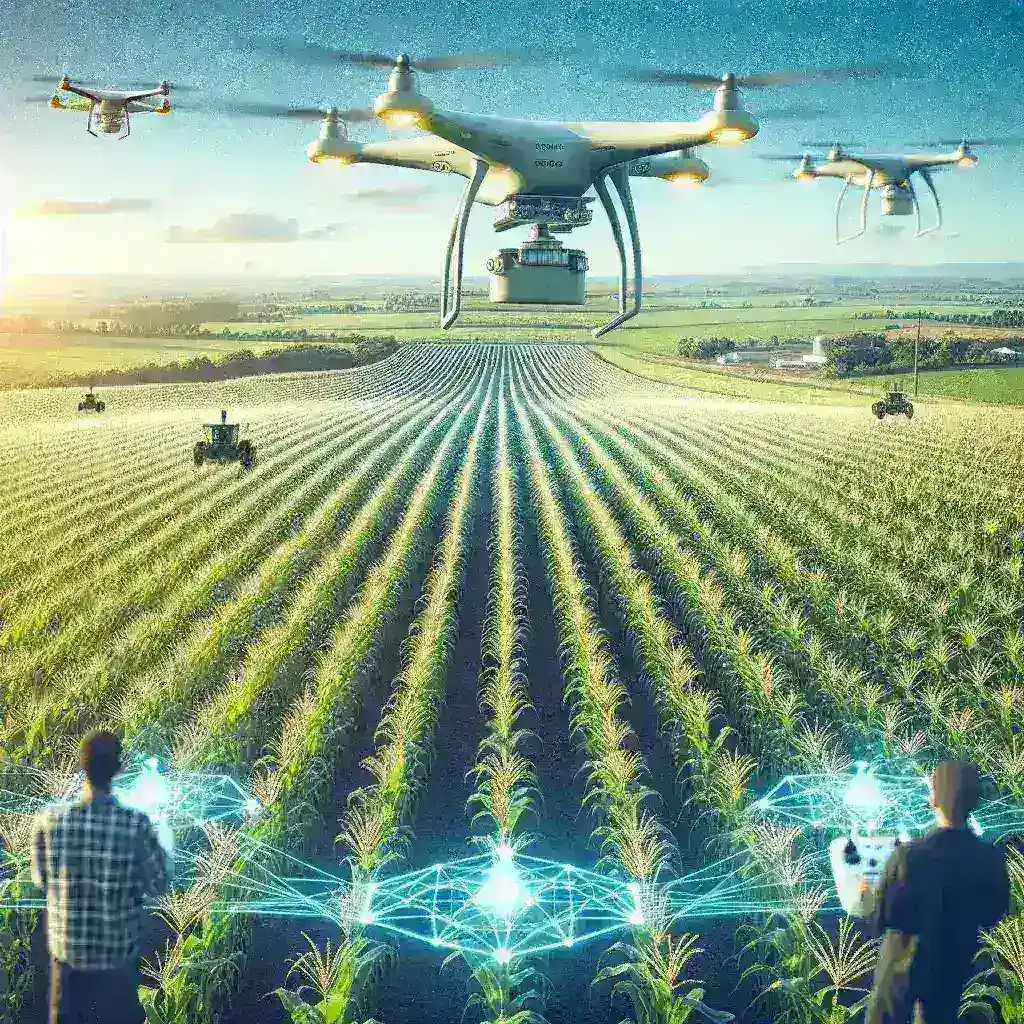Introduction
The advent of technology in agriculture has brought about transformative changes, and the latest innovation is the USDA’s piloting of AI pest control drones. These drones represent a significant leap towards more efficient, sustainable, and precise farming practices in the United States.
Understanding the USDA’s Initiative
The United States Department of Agriculture (USDA) has always been at the forefront of agricultural innovation. With the increasing challenges posed by pests and the need for sustainable farming practices, the USDA’s initiative to test AI-driven drones for pest control is a timely response. These drones are designed to monitor crop health, identify pest infestations, and deliver targeted treatments, ultimately reducing the need for widespread pesticide application.
The Technology Behind AI Pest Control Drones
AI pest control drones incorporate advanced technologies such as machine learning, computer vision, and real-time data analytics. Equipped with high-resolution cameras and sensors, these drones can fly over fields and collect data regarding plant health, moisture levels, and pest presence. The AI algorithms analyze this data to determine the precise locations of pest infestations, allowing farmers to apply treatments more accurately.
How AI Drones Operate
- Data Collection: Drones are deployed to capture images and environmental data from the fields.
- Image Processing: AI algorithms analyze the captured images to detect anomalies that indicate pest infestations.
- Targeted Action: Based on the analysis, drones can either alert farmers or autonomously apply treatment.
The Benefits of Using AI Pest Control Drones
1. Enhanced Precision
One of the primary advantages of using AI drones is their ability to deliver targeted treatments. Traditional pest control methods often involve blanket spraying, which can lead to overuse of chemicals and environmental damage. Drones enable farmers to apply treatments only where necessary, minimizing pesticide usage and reducing toxicity.
2. Cost Efficiency
By optimizing pest control efforts, farmers can significantly reduce operational costs. Less pesticide use not only saves money but also mitigates the financial losses associated with pest damage. Additionally, the data collected by drones can help farmers make informed decisions about crop management, leading to better yields and profitability.
3. Sustainable Practices
As agricultural practices shift towards sustainability, AI pest control drones align with these goals by promoting more environmentally friendly pest management. Reducing chemical runoff into water sources and protecting beneficial insects are just a few of the positive environmental impacts.
4. Real-time Monitoring
AI drones provide real-time data, allowing farmers to respond quickly to pest threats. This immediate insight enables proactive measures rather than reactive ones, leading to better crop health and reduced losses.
Challenges and Considerations
1. Initial Investment
Implementing drone technology requires an upfront investment that may be prohibitive for some farmers, especially small-scale operations. However, as technology advances and becomes more affordable, this barrier is expected to decrease.
2. Data Privacy and Security
With the collection of vast amounts of farm data, concerns regarding privacy and data security must be addressed. Farmers need assurances that their data is protected and used ethically.
3. Training and Adaptation
Farmers will require training to effectively utilize this new technology. Ensuring that the agricultural workforce is equipped with the necessary skills to operate drones and interpret data is crucial for the successful adoption of this technology.
Future Predictions for AI in Agriculture
The potential for AI technology in agriculture extends far beyond pest control. As research and development continue, we can expect an increase in automation and AI integration in various aspects of farming, including crop monitoring, yield prediction, and resource management.
Cultural Relevance
The integration of technology in agriculture resonates with a growing cultural shift towards sustainability and efficiency. With consumers increasingly concerned about the environmental impact of food production, the use of AI-driven technologies is likely to gain traction and acceptance among the farming community and consumers alike.
Conclusion
The USDA’s piloting of AI pest control drones marks a pivotal moment in American agriculture. By harnessing the power of technology, farmers can enhance their practices, reduce costs, and promote sustainable farming. As the agricultural landscape continues to evolve, these innovations will play a crucial role in shaping the future of farming in the United States.
Call to Action
Farmers, stakeholders, and consumers alike should keep a close eye on the developments surrounding AI technology in agriculture. Embracing these innovations could lead to a more sustainable and prosperous future for American farms.

